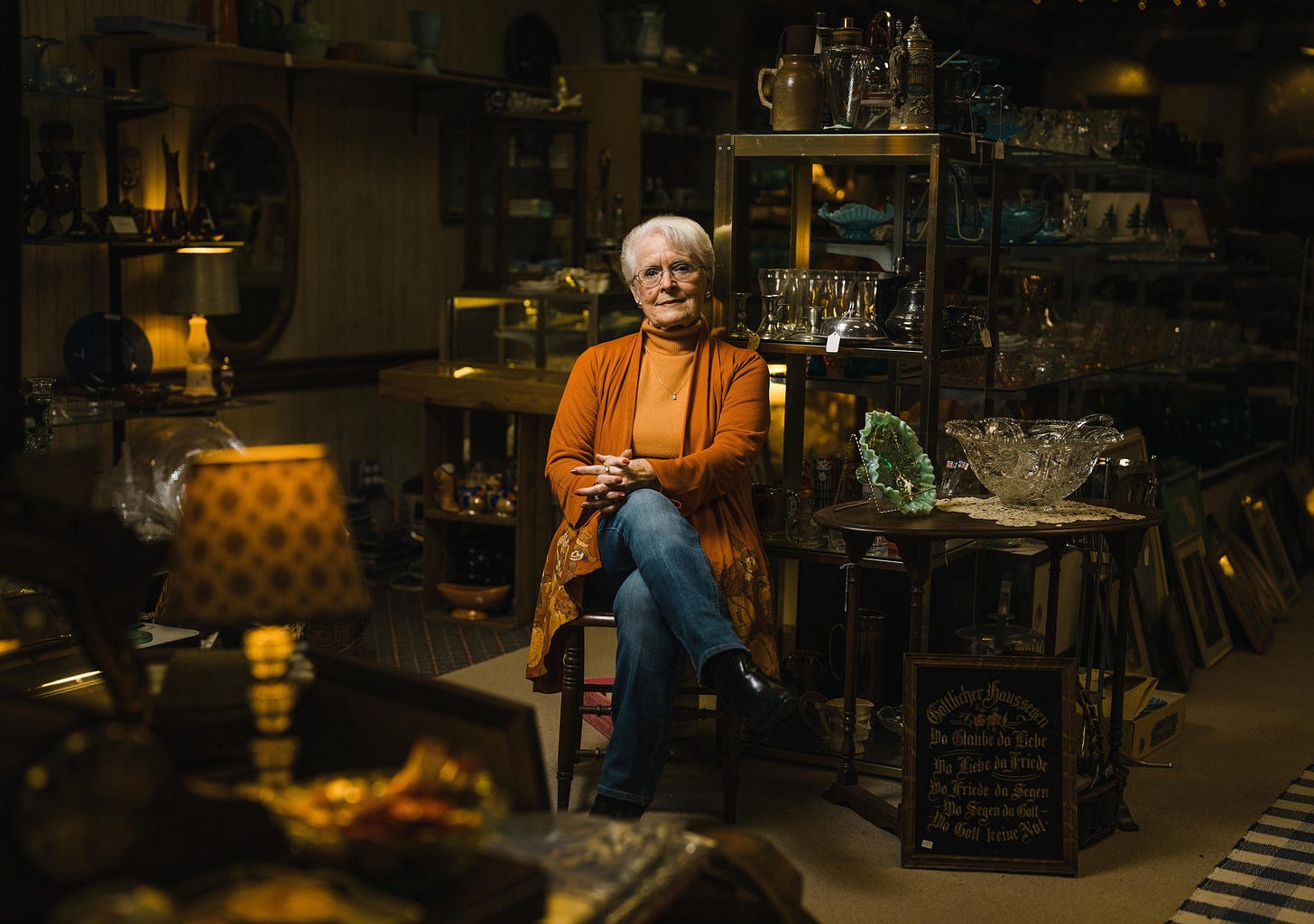One of the important ideas behind great community storytelling is “Let people speak for themselves.”
Almost every Storyville story is told using only an interviewee’s quotes. Here’s an example:
“I think time, space, and money can be barriers for people, especially Black males, to get into yoga. I think people have a perception that they don't have the time. I know the common thing is to say, ‘We all have 24 hours in a day.’
But I think there's actually a lot of truth in that people don't have the time. For example, if class is at seven but you work until eight, you don't have the time. Or people making X amount of dollars, barely covering X amount of things, may not be able to afford a class. And because time is money, people can't not go to work to go to yoga.
And in terms of space, that’s both physical and mental. One, if there’s nowhere to practice yoga, it’s hard to get into. With mental space, maybe you work until six and class is at seven, but you’re just DONE for the day. Maybe you have a physical job, your job is mentally draining, or you’ve got kids to pick up and take care of. Are you getting any support with your kids? Are you a single parent? Ironically, the people who need it most can't get it because of all the reasons they in fact need it.
Then you need to see people like you there. You need to see people like you represented in class. If there wasn't that big, burly Staten Island guy in class, I don't know if I would have come back. People need to see themselves represented to feel comfortable taking that step.
I can think there are a lot of reasons more guys should come to yoga, from deep to shallow. There are always guys that are like, ‘I need to get more flexible for my gym stuff.’
Yeah, that's always the easy go-to reason. Sure, it helps with the gym stuff. But what I would like to have men realize is that a lot of times they feel like they’ve always got to be perfect. They work hard and there's sometimes a lack of feeling like you can ask for help.
I think yoga is a great way to really tap into the awareness that you're not a machine. You're a living, breathing person, much like the people that you may feel like you need to take care of. Men take ownership of taking care of people in their life. Or they feel like I have to do everything by myself.
I think yoga helps you realize not only is everything you do connected, but you actually have some tools to take care of yourself in the same way you take care of your loved ones. A lot of my friends who are fathers say they don't have a lot of time to take care of themselves. They don’t have time to work out or come to classes.
I say to those people, ‘Have you taken a breath?’
I think it’s important to even let guys realize that taking a breath is okay. It’s ok to not be grinding. You weren't born to grind. It’s not your natural disposition be tense and hard. There's room for you to grow and still maintain your strength and masculinity. Yoga is just another key for you to get to where you actually want to go. Guys often are punching a wall because you thought that's how you had to do it.
But Yoga shows you that there's a way around the wall, even to the point where there's not really even a wall there, and you were just getting in your own way all along.”
- Nicholas Herd, Yoga with Quazzy
Minimizing or completely eliminating the addition of 3rd party writing is important for many reasons:
It turns the person who lived the story into the storyteller and the “star of the show”: If we want to use storytelling to strengthen our communities, it’s as important to consider how those stories are presented as what stories are told.
If we want to create ownership, let people own their stories. If we want to create togetherness, let them tell their stories to the community they belong to. If we want to create more and more meaningful human-to-human interactions, get out of the way and let them speak to each other. There is a temptation for the storyteller to become the star—“Look at my beautiful writing! Look at me telling these stories!”—and this quote-based approach is a way to mitigate that. It changes the power dynamic from “Someone is telling a story about me” to “I am telling my own story to others.”
Don’t forget that community storytelling is as much for building a sense of belonging, support, and inspiration for the person whose story you’re telling as it is for the community at large. Imagine how it would feel to receive an outpouring of love, support, attention, and yes, possibly money, after telling your story to your community and even people beyond your community? You’ll develop a higher understanding of your role and importance in the community, whether it’s as a business owner, government official, volunteer, or citizen. It makes people feel good, and that in and of itself is enough of a reason to pursue storytelling in your community.
It’s practical and beneficial: It helps eliminate the need to be a great writer to be a great community storyteller–good questions and a conversation will give you all the building blocks you need to tell stories like these, no writing from scratch necessary.
Part of that is the removal of writing style. The detailed descriptions of John Steinbeck or the scarcity of Cormac McCarthy are what draws people to those authors—but also what drives people away. Building the foundation of a story aids in removing stumbling blocks that keep people from actually reading the story. such as using too many words, being too vague or descriptive, or giving the impression it’s a Creative Writing 101 piece instead of someone's life and livelihood.
In order to pull this off, the storyteller needs a method for collecting quotes in an efficient and effective way—more on that in a second.
It’s more human: There are physiological triggers in our brain that ignite when we interact with other humans but aren’t while we read a news article, see an advertisement, or scroll through social media. Hearing or reading someone speak directly to us has the potential to capture more attention in a more meaningful way than a stale recitation of facts. The goal is to get a reader to feel like they’re listening to a friend over coffee, sitting around a campfire, or having a great conversation on a road trip, and that won’t happen with interjections from a nameless, faceless 3rd party constantly inserting themselves into a story or commandeering the entire story themselves.
Unless a person has the official, paid position of Community Storyteller, chances are storytelling is one bullet point in a job description with many other bullet points. This necessitates an efficient process to communicate beautiful stories.
Here’s mine:
Step One: Interview
Step Two: Edit
Step Three: Publish
Let’s break down these steps.
Interview
If you’re taking the quote-based approach, you’ll need a way to record everything that is said during the and in a way that is easy to use in the next step, editing.
There is no better way than the Otter app.
Download the app on your phone and create a free account. Hit record right before the interview and it will record both the audio of your conversation as well as transcribe it in real-time. When you stop recording, it will automatically upload the audio linked to the transcription, creating a resource that you can easily search for keywords, reference the audio recording if the transcription is unclear (just click a word in the transcript and the audio recording will play from that point), or copy and paste.
You can use this as easily as you could for a two-hour-long deep dive into someone’s story as you could walking around the city during an event to gather testimonials from attendees.
When the interview is “done”, don’t stop recording until you’ve walked out of the building or you know for a fact nothing more will be said that could work for the story. Many times after the interview is complete, people will let down their guard in a way they hadn’t up to this point and some of the best opening lines, closing lines, or storytelling nuggets of gold will be dropped after the formal interview is over.
Otter won’t do all of the work for you, though. Depending on how deep of a story you’re doing, the transcription will end up about 75% ready for publishing. It will need to be cleaned up and clarified, which takes us to step two.
Editing
The trade-off you get by not writing from scratch is to work with the building blocks you’ve been given in your interview. Copy the transcription in whatever text editor you use, and then go line by line, cleaning up the basics like punctuation, vocabulary (sometimes words that are spoken carry different connotations when written), and sentence structure. As you go through this process, you’ll get a feel for the story you have and can start eliminating unnecessary sentences or topics
The final step is to move your story blocks around to create a story that is clear and easy to read. Because the context of a conversation can be more tangential than writing, quotes may need to be moved around and edited to present a cohesive story with a properly conveyed meaning. If your stories are primarily published on social media, you might have enough for three posts and can create a story series. Group each post by a common theme, or if the story makes more sense being told chronologically, separate each post after a natural conclusion.
Publishing
Publish the story in as many places as you can: social media, website, newsletter, print publication, email list, submit them for publication in a local newspaper. Get as much mileage from it as you can. Stories can only work their magic if people read them, and more people reading the story means more magic. The steps you’ve taken up to this point encourage people to read the stories, but they need to see them first. Put them everywhere you can.
Publish the story, but organize your files in a way that they’re easy to refer back to and use in other ways in the future: pull quotes for social media posts or marketing, presentations, end-of-the-year recaps are just ideas for further use of the story you’ve created.
Conclusion
This is just a process for story creation, not the art of it. For example, rapport, listening, quality of questions and responses, the skill and style of editing, the visual media accompanying the stories, and presentation all make or break the story you’re trying to tell.
But along with learning the art, a great storyteller needs a great process that is easy to manage. Feel free to steal this process for your community, adapt it, and leave your thoughts in the comments.
You can also connect with me on LinkedIn, Facebook, and Instagram.










